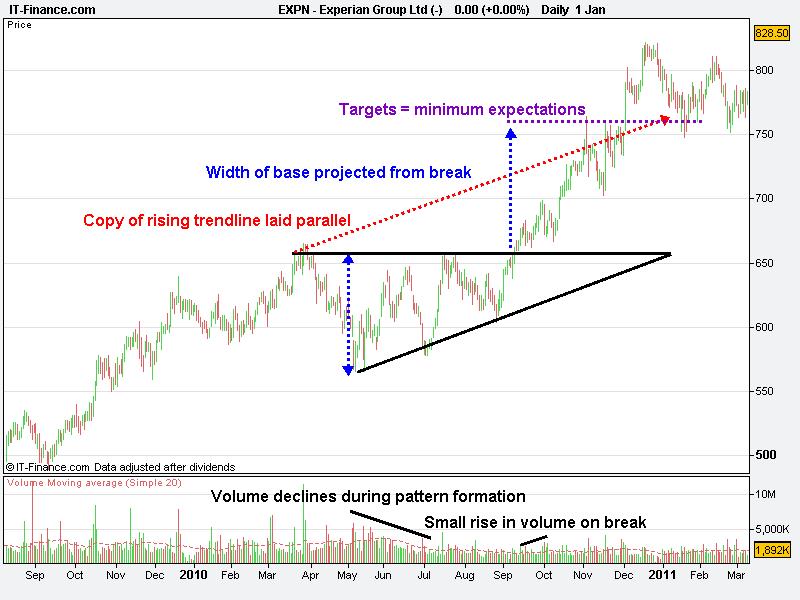The information on this page is not a personal recommendation and does not take into account your personal circumstances or appetite for risk.
Introduction
As previously discussed, Support & Resistance are key price levels highlighting the relative enthusiasm of buyers and sellers. These levels display the psychology of different market participants at those levels. Ascending triangles are usually considered continuation patterns, essentially a pause before the original uptrend resumes.
Ascending
Ascending triangles are a version of the Symmetrical Triangle pattern. They can be identified by at least 2 higher lows and two horizontal highs. When trendlines are drawn across the highs and below the lows, they converge to form an ascending triangle or rising wedge. The pattern is normally considered a continuation of any existing uptrend, however, they can also lead to reversals in downtrends. As always, confirmation is required, in this case via a valid breakout from the pattern. Price targets for the following move can be calculated by A) taking width of base of triangle and projecting upwards from breakout point, or B) copying rising line and placing parallel from top of base to form a channel.

Requirements
1) Existing uptrend required so triangle can serve as pause before continuation higher. Downtrend required so
pattern can serve as reversal. Pattern serves to build up buying pressure. Not valid in sideways trend.
2) Volume sees overall decline as pattern develops, but should pop on breakout.
3) Pattern can take from a few weeks to build, but can also take many months. Average 1-3 months.
4) Breakout should occur between ½ and ¾ of way through pattern. Extending trendlines to join (apex) allows estimate of duration of triangle and expected breakout area. If price action moves beyond ¾, pattern becomes suspect. Breakouts before ½ normally premature.
5) Breakout normally sees pull-back to prior resistance, which should then revert to support.
6) When using parallel trendline for target measurement, target line should end in-line with apex.
Our working example shows a breakout between ½ and ¾, on higher volume and targets being met.
Caveat
Individual technical indicators should never be relied upon in isolation for trading decisions, however strong the signal may be. Ultimately they are one of many indicators, which may, in the majority, be pointing the other way. Always use look at other indicators (moving averages, trendlines, price, price patterns, volume) to assist in the final trading decision. Lastly, the current trend of a share should always be respected – preempting a change can prove costly.